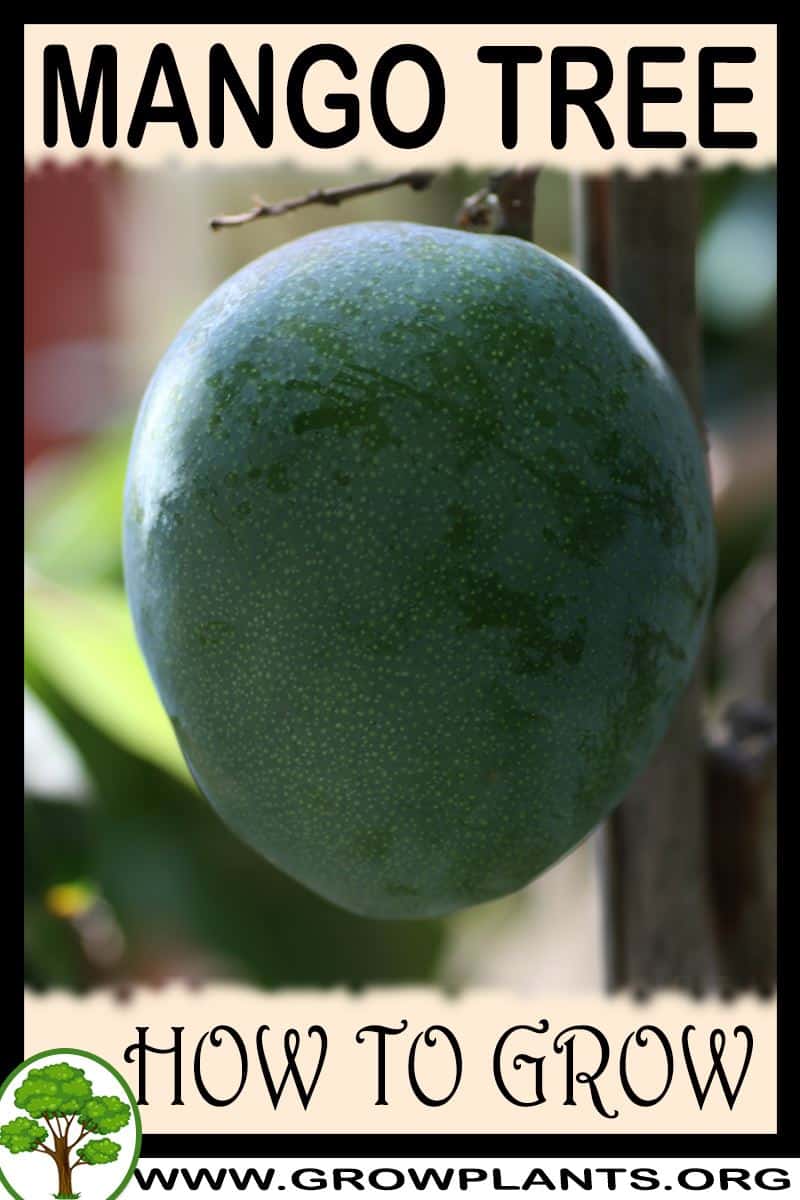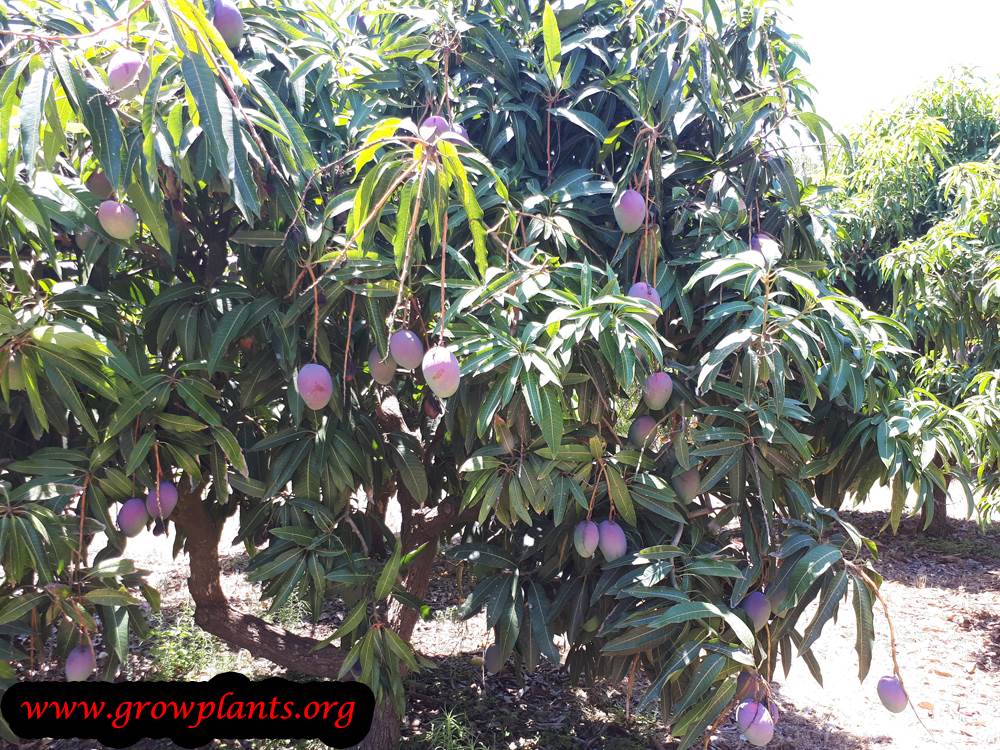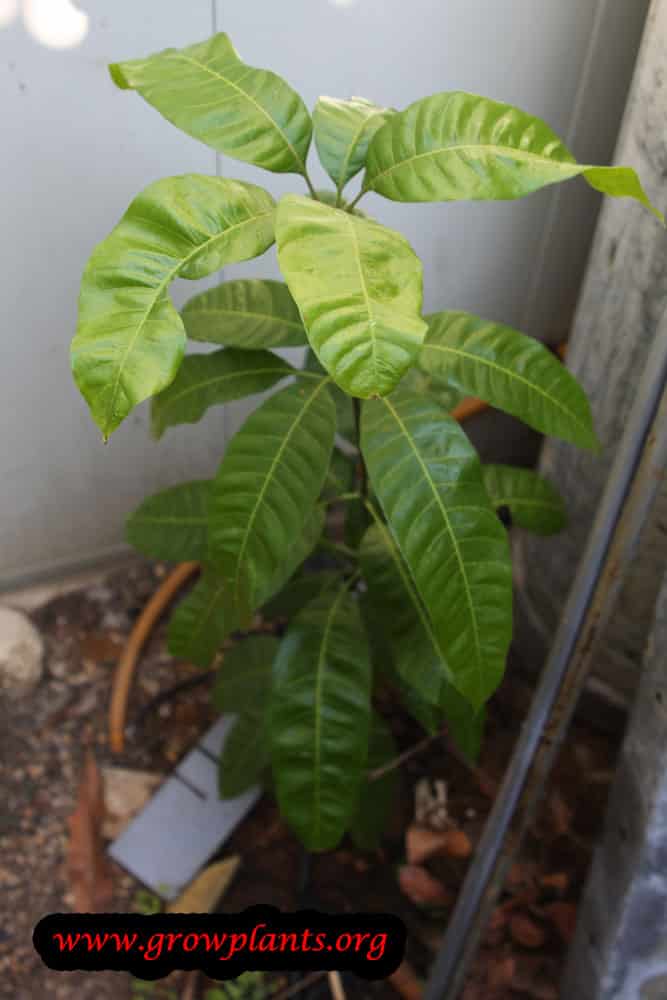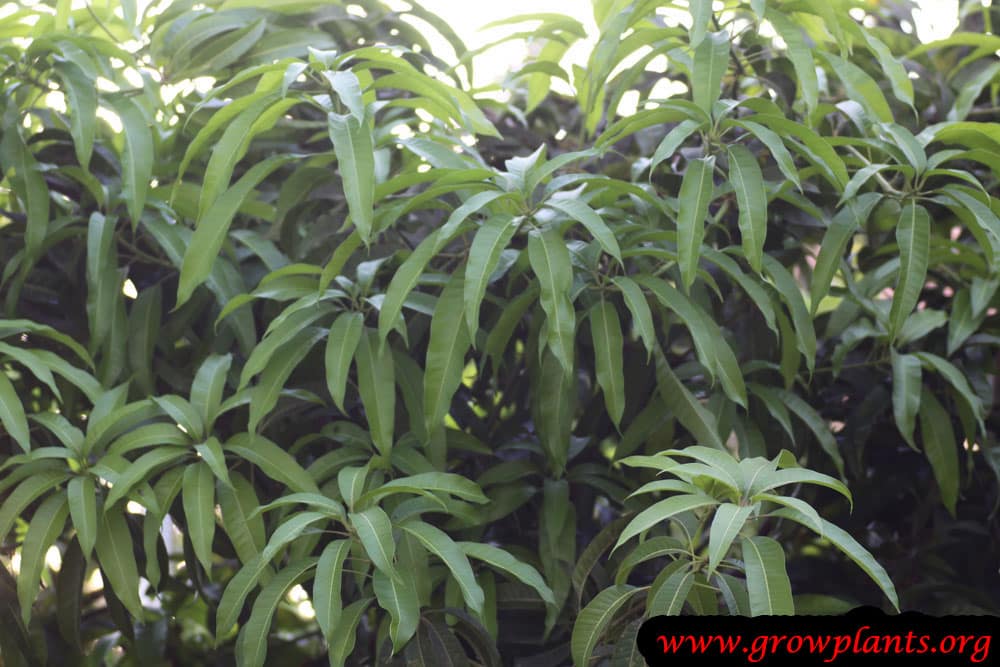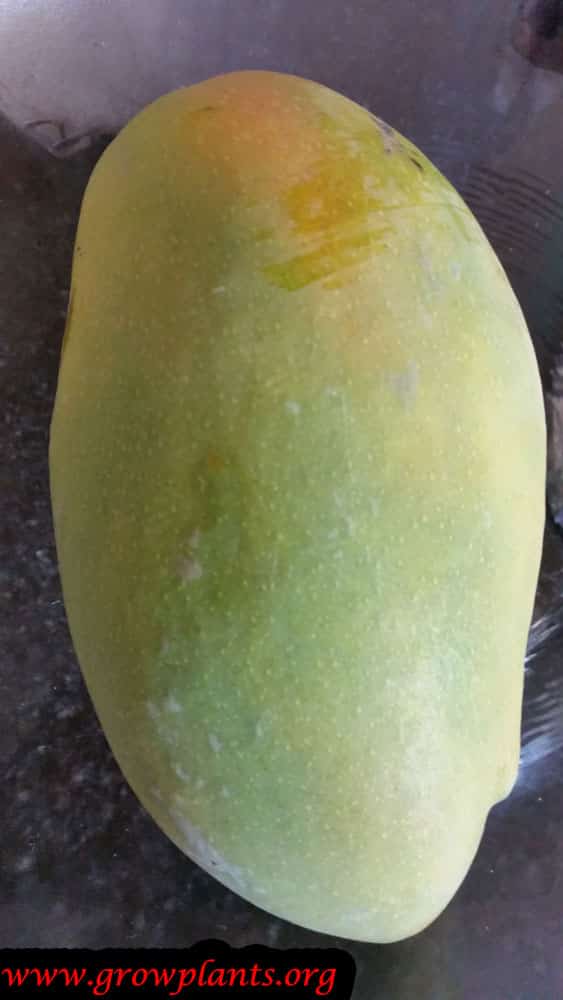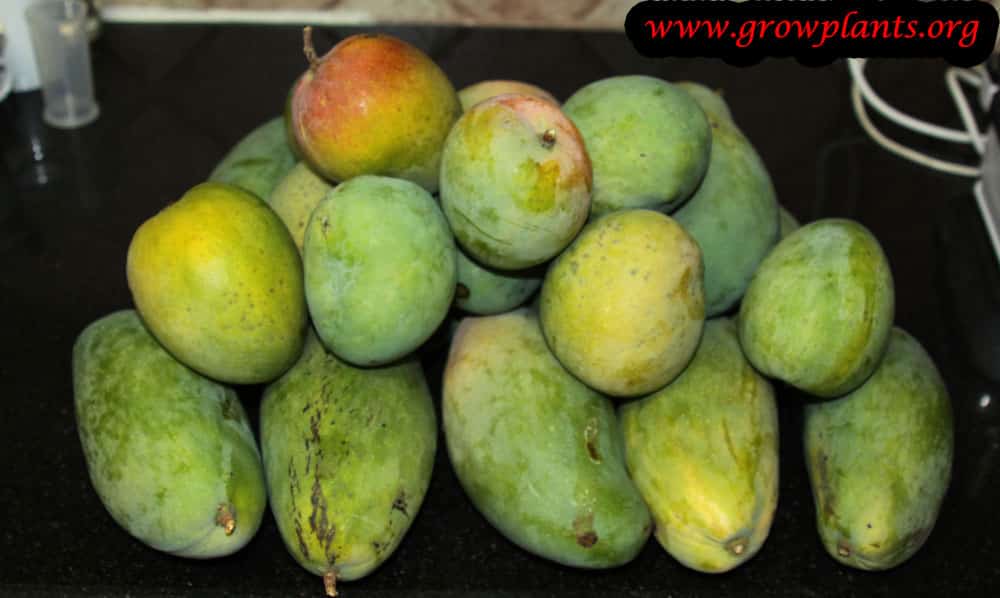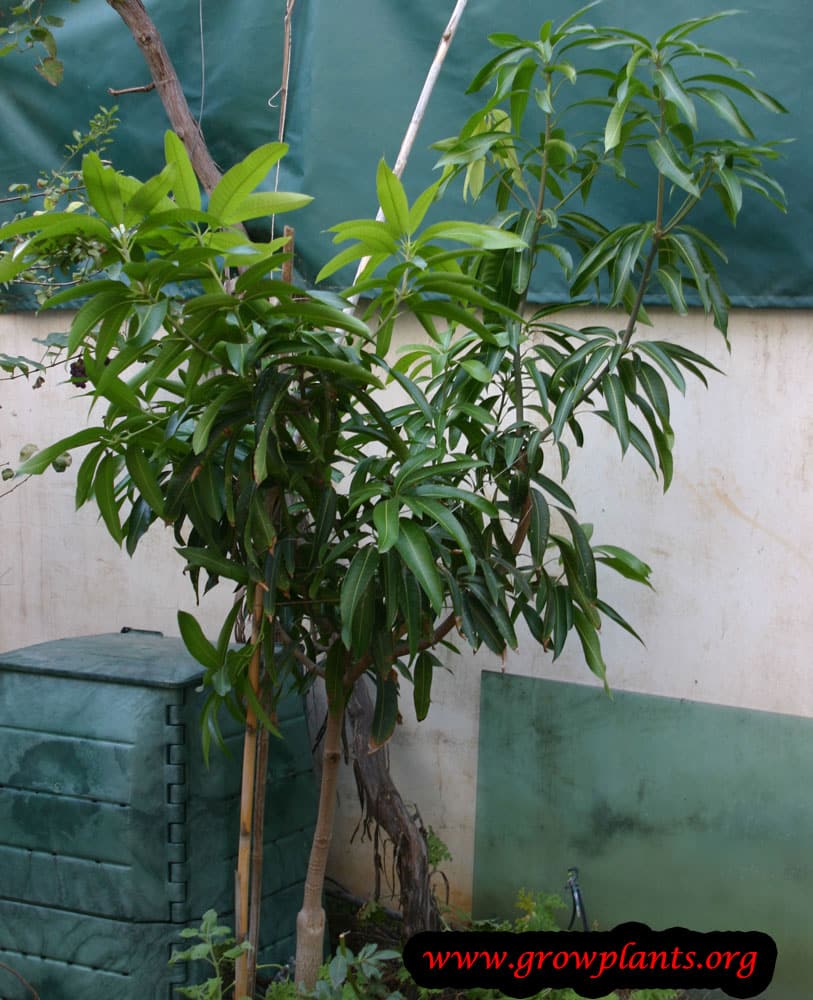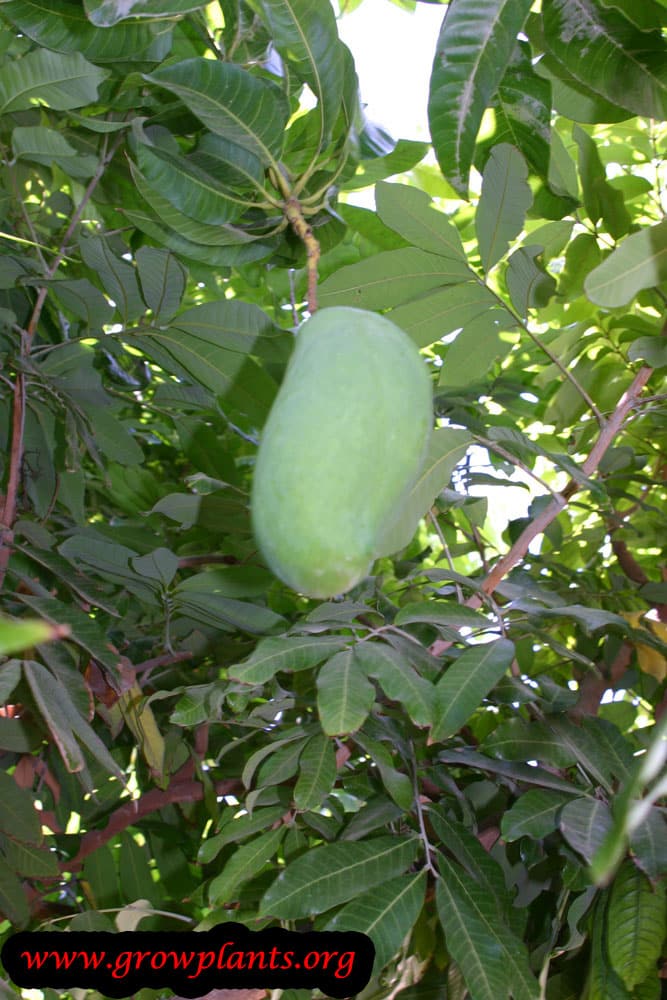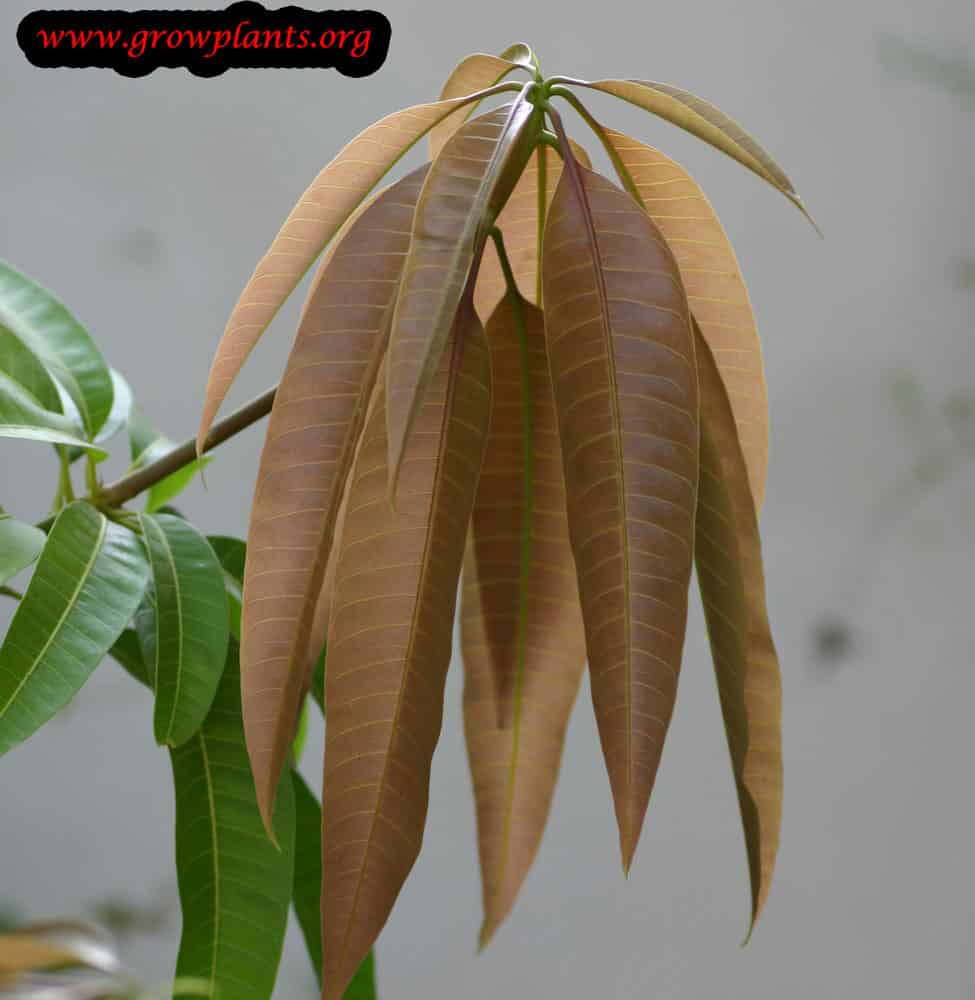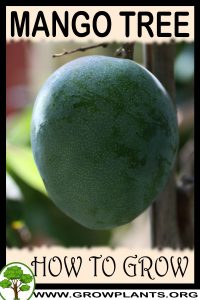
Mango tree grow and care tree of the genus Mangifera also known as Mango, Mango tree perennial evergreen plant, used for the edible fruits also can used as ornamental plant for shade tree, can grow in tropic, subtropical or mediterranean climate and growing in hardiness zone 10b+ and with the right care in hardiness zone 10a
Leaves color is green in oval shape with pointed edge of the plants sometime can give the fragrant of the fruits.
Flower color white green, the flowers 1 mm and grow in inflorescence.
Mango tree fruits
Fruit can be in a variety of sizes and shapes: fruit size ranges from 5-15+ cm, shapes can be: elongated shapes, oval, round, flat, S-shaped. Fruit colors can be: green, red, orange. Sometimes Mango tree can be fibrous it’s recommend to buy varieties that are not with fibers (fibers it’s when in the Mango fruit has sting inside).
Mango tree for sale – Seeds or Plants to Buy
No products found.
How to grow Mango tree – grow and care:
Warm climate, rich soil, instead of use chemical against the aphids, possible to take care on the tree in the beginning season of the aphids, if wash the tree from the aphids they won’t establish, after aphids establish it’s harder to manage.
How to care:
Add mulch especially when the plant young, fertilizer at least once or twice a year different fertilizer when the plant young for growth, prune once a year better after the fruits, add organic matter, when there are a lot of rains and storms in the blooming season better keep the tree protected from winds or else the tree might not succeed to hold the fruits, when there are aphids better to protect the plant from aphids that arrive from the ground, and clean the aphids directly when they start to establish
What is the best way to start growing?
Plant / Seed (explanation bellow) only recommend just if choosing good cane base and know how to graft / Vegetative reproduction – cutting or air layering
How to propagate by cutting:
Propagation by cutting, when start from branch need to choose brown branch fully grown use root growth hormone that fit for woody branches, need to keep high humidity, moist soil and if put it in close box or greenhouse, need to be well ventilate that will moving of the air, watering by spraying or create fog and take care don’t let it dry, temperature of 25-28C (77-83F)
Is it necessary to graft?
Yes, the tree yield without graft but it’s better to graft to get better yield
Is it necessary to graft or use vegetative reproduction?
Necessary to graft in order to get good quality of fruits the tree bear fruits faster and can choose different fruits by: size, season, taste and more character that should know before grafting, possible to graft more than one cultivar on the same tree
Difficulties or problems when growing:
Get rid from the aphids that cause fungal makes the tree black and sticky
Planting season:
Spring in hardiness zone 10a, spring to summer hardiness zone 10b, all year in hardiness zone 11+
How to plant:
Dig hole bigger 50-100% more than the roots ball, add to the hole, organic matter, dead leaves and humus put back some soil and mix it and cover it with mulch to keep the moist, after this put the tree cover strong enough that won’t fall put support for the plant if needed, if the plant is not stable consider to prune, water it twice in the first day and every day for two weeks increase the amount of water until the plant establish.
Pests and diseases:
Aphids, ants, fungal
Pruning season:
Summer to autumn, in cultivars that not bearing a lot of fruits need to prune directly after the fruits
How to prune:
Infected branches, prune inner branches mostly in the inner branches high chance of get infected by aphids, if prune right and all the fruits and the stems get enough sun there is less chance that the tree will get infected
Size of the plant?
1.5-40 m, 5-120 feet
Growth speed in optimal condition:
Medium growing, fast growing
Water requirement:
Average amount of water / Big amount of water
Light conditions in optimal condition for growing:
Full Sun
Is it possible to grow indoor as houseplant?
No
Growing is also possible in a planter /flowerpot or containers:
Yes, but just dwarf species or even as bonsai can bare fruits or limit the growth of the roots, container need to be 50% bigger than the root ball until the plant arrive to the desirable container, wouldn’t recommend to start from big container on small tree in this method it’s care for the viability of the soil, minimum size of the container 50-100L (10-20 gallons) and bigger is better, making enough holes in the container for good drainage also choosing soil for container important an option it’s to use potting mix or peat soil with perlite and organic matter, care instruction every few years to switch the soil with big container there is no need to switch all the soil just switch part and cut some of the roots ball (can switch from the side and the top, fertilizer at least once a year, need to add humus few better twice, water it regularly and when put bottom for the pot be aware not to let the water stay there more than one day and do not over water it’s destroy the soil and the roots, consider to graft in order to get good quality of fruits or start by cutting and the that tree will bear fruits after 1m (40inches).
Blooming information
Bloom season:
Spring, summer
General information about the flower
Small flower 1 mm, white green grow in inflorescence
Thinning the bloom:
In the first 2 years recommend, usually the mango take of a the flowers but if not need to take care of the flower and the fruits and reduce the amount
Pollination is done by:
Bees and more
Edible Fruits
Fruit harvest season:
Summer / Autumn
Fruits pests or diseases:
Birds, Aphids, fungal
What can be done with big quantities of Mango tree fruits?
Eaten raw, ice-cream, leather fruits, used for spreads, Amchoor/amchur (amba), juice, dry
Work requirements on the fruit:
If the tree attacked with aphids and fungal, care to trims the infected leaves around the fruits
How long does it take to bear fruit?
3-5 years, but from seeds might take longer
Ripening of fruit
Unripen fruit can use to eat, in different ways like in salad with salt or as Amba
How to grow Mango tree from seed
Sowing requirement:
Clean the pulp from the seed after this need to care for the seeds and dry on net, if the seeds dry better to soaks the seeds in water for 24 hours, another possibility less recommend to open a little bit the open the seeds shell, temperature 21-29C (70-84F)
Saving seeds until sowing:
Dry, room temperature, better to used seeds directly
Sowing season:
Spring in hardiness zone 10a, spring to summer hardiness zone 10b, all year in hardiness zone 11+
Planting spacing:
Separate pots, 3-5 m. can be more deepened on the species
How to plant
Depth of Sowing:
4-7 cm, from the top of the seed
Conditions for seeds germinate:
Moist, warm, full sun
Watering requires for Seeds:
Big amount of water with moist soil and high humidity, don’t let it dry it might atrophy
Germination time:
1-5 weeks, possible after a year depend the condition
Condition of seedling:
Full sun, soil moist
Choosing the right seedling to grow:
Highly recommend to sow few seeds and choose just one to transplant to the garden, better to graft before transplant, because some trees will reject the grafting, in this way it’s insure that the tree grafted
Do the seeds require burying?
No
Cultivars
Tommy Atkins mango – originally from Florida is one of the most popular and commercial Mango. One of the reasons is it long lifetime (up to 3 weeks in the refrigerator).The skin color is typically dark red with yellow and green accents. The fruit ripens from June to October. Tommy Atkins fruit are juicy with a tropical mild flavor. Fruits are medium to large in an oval shape size and weight until 1kg (2.2 pounds). The fruit is a good source of fibers and of vitamins A and C. The flesh is quite firm (due to the amount of fibers). To determinate ripeness lightly squeeze the fruit. Tommy Atkins mangos can be eaten fresh or cooked. The tree grows 5 to 10 meters (16 to 32 feet) tall and wide. The tree requires a neutral soil (pH around 6.5) and moderate watering. Harvesting is done between March and May.
Keitt Mango – originated from south Florida. The skin color is green even if the mango is perfectly ripe and sometimes there is a little blush on some portions of the mango. Keitt mango is shortly available, from July to September. It is particularly appreciated in Asia countries and eaten raw or as pickles. The texture is firm and fibreless. The fruit is extremely large and weights 0.5 to 1kg (1 to 2.2 lbs). The tree grows 5 to 10 meters (16 to 32 feet) tall. It takes it 5 years to bear fruits.
Alphonso Mango – originally from India (can also be named Hapuz, ‘King of mangoes’, Aapoos, Hafoos, Hapus). The fruit is small (up to 300g -10,5oz) and the skin is almost all a bright golden yellow with some hints of red that spread across the skin. The flesh is yellow. The flesh texture is tender, almost creamy with a non-fibrous pulp. The taste closer to the seed is very complex and floral. The tree grows 3-4 m (10 -13 Feet) tall and wide.
Haden Mango – (also named Hayden mango) originated from Florida Red and green or yellow skin. The flesh is yellow, nearly free of fibers. The taste is sweet, with rich flavor. The fruit ripens from June to July. The tree grows 15 to 30m (50 to 98 feet) high and with the age can attain in width 35 -40m (114 -131 feet). The fruit weight around 200g (7oz).
Ataulfo Mango – (also called Champagne mango, honey mango, Adolfo mango) from Mexico. The mango is yellow golden and is small (200g – 7oz). Ataulfo mango typically reaches 6m (20 feet). The fruit matures 3 to 5 months after the tree flowers. Ataulfo mango fruit is sweet and has velvety texture. The yellow flesh is fibreless.
Madame Francis Mango – originated from Haiti. Rich and sweet flavor.
Coconut Crème mango tree – from south Florida. The skin is bright red to yellow orange and the pulp is bright orange. The flavor is creamy, fibreless and reminds coconut taste. Trees grow moderately low. The fruit is very large and juicy.
Scientific name:
Mangifera indica
Categories
| Blooming Seasons |
|
|---|---|
| Edible Parts |
|
| Culinary uses |
|
| Flower colors |
|
| Climate |
|
| Harvest Season |
|
| Leaf color |
|
| Ornamental parts |
|
| Plant growing speed |
|
| Plant life-form |
|
| Plant Uses |
|
| Planting Season |
|
| Plants sun exposure |
|
| Watering plants |
|
| Hardiness zone |
|

